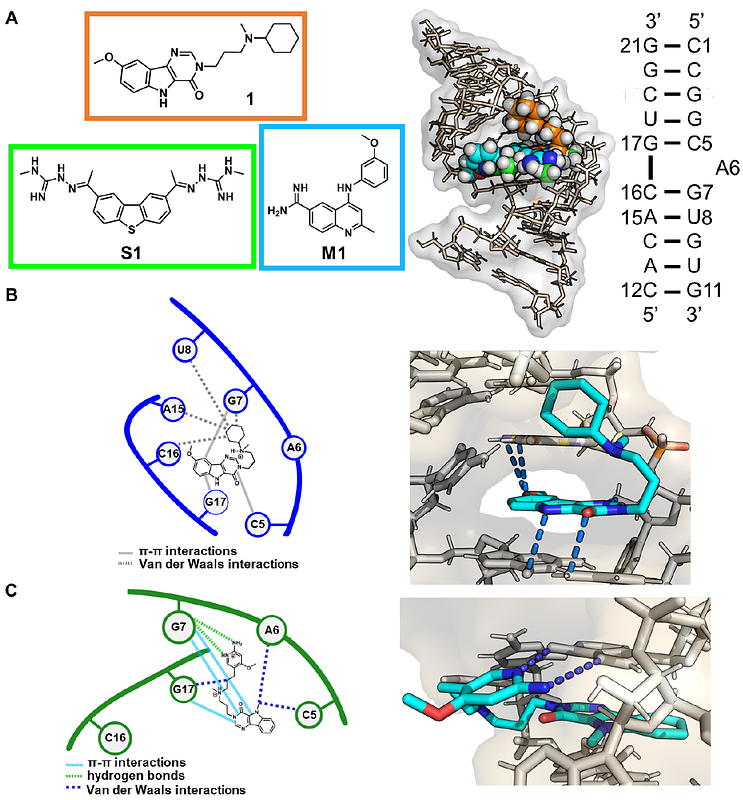Design of an orally bioavailable small molecule that modulates the microtubule-associated protein tau's pre-mRNA splicing

Design of an orally bioavailable small molecule that modulates the microtubule-associated protein tau's pre-mRNA splicing
Zhang, P.; Taghavi, A.; Abe, M.; Aikawa, H.; Akahori, Y.; Chen, J. L.; Tong, Y.; Baisden, J. T.; Cameron, M. D.; childs-disney, J. L.; Disney, M. D.
AbstractFrontotemporal dementia with parkinsonism linked to chromosome 17 (FTDP-17) is caused by the aberrant alternative pre-mRNA splicing of microtubule-associated protein tau (MAPT) exon 10, the inclusion of which encodes for a toxic tau protein harboring four microtube domains (4R tau). Here, we describe the design of an RNA-targeted small molecule that thermodynamically stabilizes the structure of a pre-mRNA splicing regulator element in the MAPT pre-mRNA exon 10-intron junction to reduce the inclusion of exon 10 and hence 4R tau abundance. Structure-based drug design was used to obtain compounds that form a network of specific interactions to the RNA including multiple interactions between a one nucleotide A-bulge and the Hoogsteen face of a closing GC base pair, the latter of which was enabled by the design of base triple interactions. A battery of assays revealed that the compound binds the target in vitro and in cells and affects pre-mRNA splicing in various cellular models including primary neurons from a human tau (htau) knock-in mouse model. The orally bioavailable compound was administered per os (p.o.), where treatment diminished exon 10 inclusion, and reduced the 4R tau protein isoform. Further, the molecule mitigated cellular pathologies and behavioral phenotypes observed in the htau transgenic mouse model. This study provides a potentially general pipeline to design compounds that target RNAs and affect disease pathways and deliver compounds that have oral bioavailability and blood-brain barrier penetrance.